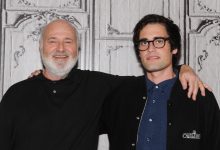7 Hitchcock Masterpieces Are Now on Netflix. Here’s the First One You Should Watch, and Another You Can Skip

NEED TO KNOW
- Seven of director Alfred Hitchcock’s movie masterpieces are streaming now on Netflix
- Though all are considered classics, some are better than others, writes PEOPLE’s critic, Tom Gliatto
- Here, a definitive ranking — plus some other Hitchcock thrillers you might enjoy
There are probably greater movie directors than Alfred Hitchcock (or maybe not), but cinema would look very different today without the long, bulky shadow cast by the Master of Suspense.
In his native Britain and then in Hollywood, Hitchcock thrilled, frightened, disturbed and occasionally just plain freaked out audiences with a string of remarkable films that continue to resonate because of their subversive psychological complexity—in movies, a lack of sentimentality acts as a strong preservative — as well as his brilliant grasp of how and what the camera communicates. His movies aren’t just classics — they’re wild rides. The seven Hitchcock films newly streaming on Netflix are an invaluable introduction to this genius.
In a way never equalled by any other director, Hitchcock was his own brand. He often put his name above the title, making a film’s artistic impetus and ownership unmistakable. And highly marketable. Portly and heavy of jowl, always wearing a dark suit, he popped up in nearly all of his films, giving himself silent, walk-on cameos. He hosted his own hit anthology television series. And, with his talent for self-promotion, he appeared as himself in the trailers for hits like The Birds and Psycho. He had the droll, deadpan presence of a mortician who might have tried to do standup material if he’d had the nerve. He was a personality, a celebrity, even a kind of star.
As a film maker, though, Hitchcock described himself as technician — admittedly, a technician without equal. He often said that he found the actual shooting of a movie boring because he’d already planned out every shot in his mind. He had little interest in inspiring his cast to give Oscar-worthy performances (he described actors then as cattle) or providing any moral message, certainly not what passes for Hollywood uplift. A movie, he told PEOPLE in 1974, “is little pieces of film glued together, which are run through a projection machine onto a screen, and the succession of images creates an illusion for the audience. That’s what true film is all about, but it’s rarely practiced.”
And yet there was a demon in there somewhere. He was arguably a sadist — his brutal treatment of The Birds star Tippi Hedren could be considered #MeToo aggression — and a thwarted, even despairing romantic. He was obsessed with beautiful, coolly aloof women. His films, in fact, are so crowded them the type became known as the “Hitchcock blonde.” And yet his women are often made to suffer horribly.
He was a visionary, a consummate entertainer and, on some level, a disturbed man. His work is essential.
Ready to watch some Hitchcock? Here’s my evaluation of the Netflix lineup, from favorite on down to give-it-a-pass.
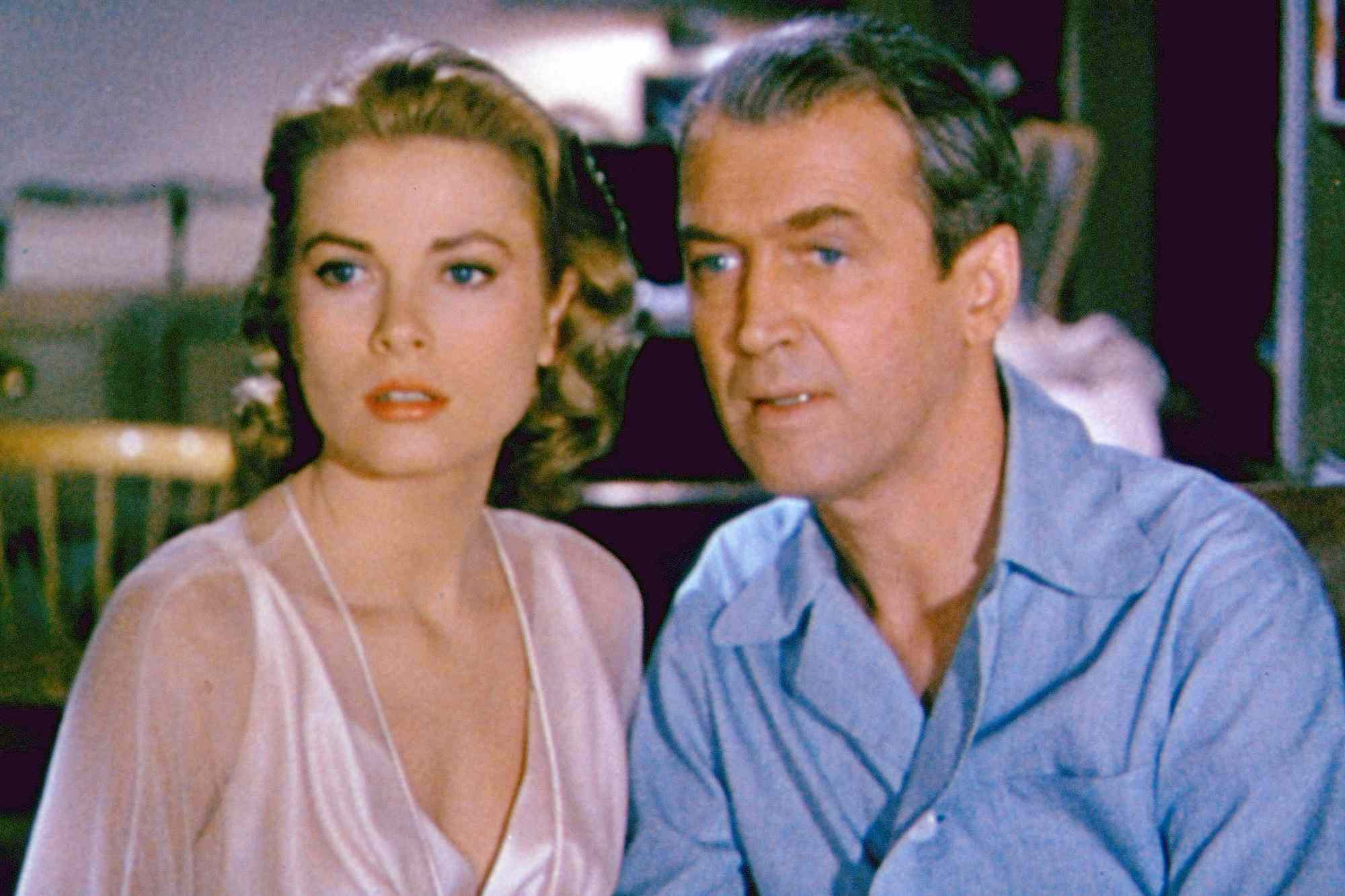
1. Rear Window (1954)
How can a movie released more than 70 years ago still feel so fresh, vivid, sharp and entertaining? To watch Rear Window is to feel the real world retreat until it’s as small and distant as an image in the rear-view mirror.
Jeff Jeffries (James Stewart), a photojournalist stuck in his Manhattan apartment with his leg propped up and healing in a cast, passes the time observing the tenants across the building’s courtyard. He soon begins to suspect that one unusually dour neighbor (the moldy Raymond Burr) has done away with his wife. (What’s the man putting in those trunks, anyway?)
Forced to be an armchair detective, he’s assisted in his sleuthing by girlfriend Lisa (Grace Kelly, utterly gorgeous and talking in a tiny voice that sounds as if her throat had been chilled with a constant supply of ice chips). Lisa is game to solve the mystery, even if Jeff is clueless when it comes to the hints she keeps dropping about getting married. If you’re in an analytic mood, you can parse Rear Window for its classic Hitchcock themes — voyeurism, certainly, and the perverse twinning of erotic attraction and rejection — but don’t let any of that distract you from the fun. The movie is a gift.
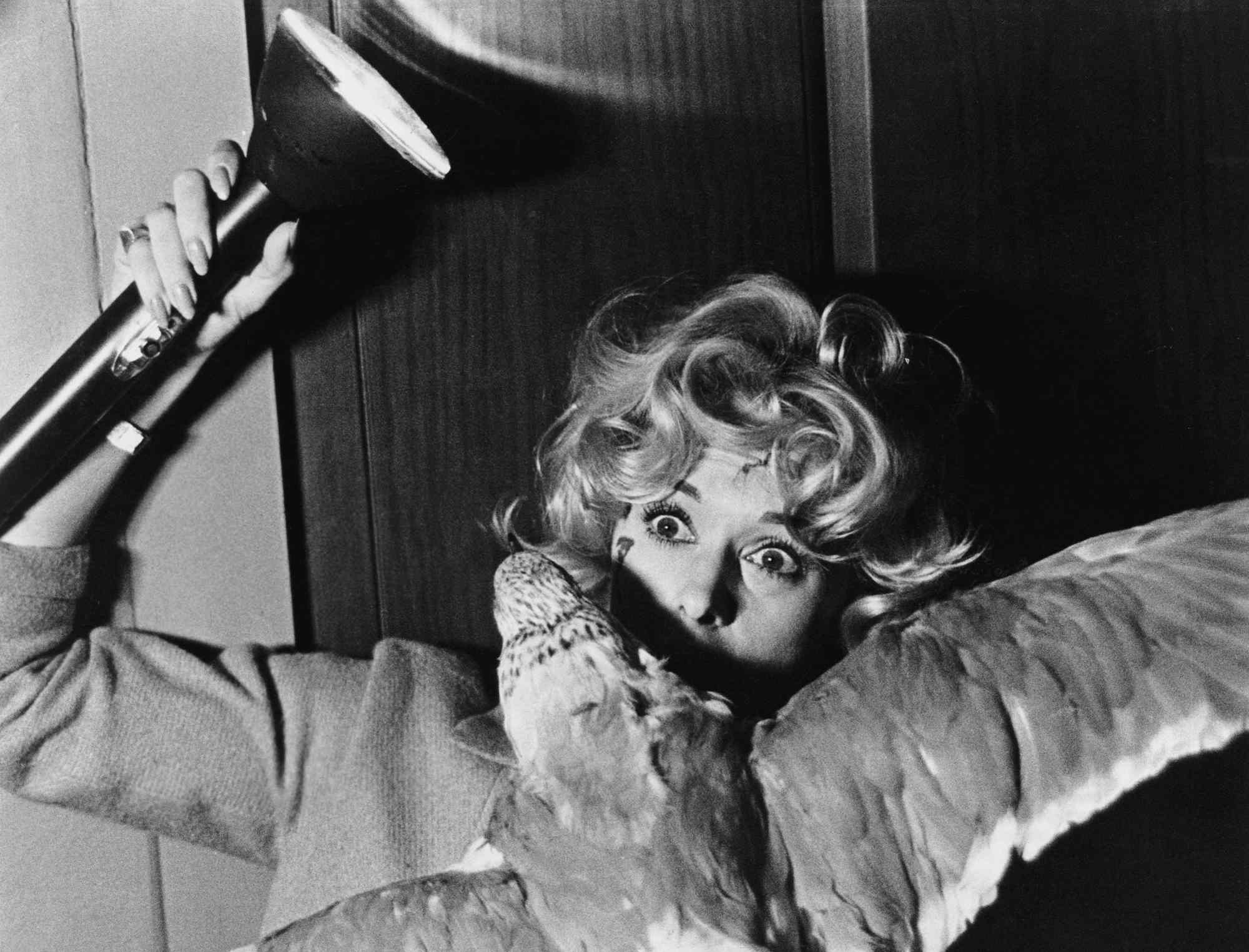
2. The Birds (1963)
This apocalyptic fantasy is as enigmatic as it is frightening. In the little community of Bodega Bay, Calif., birds begin an assault that escalates into winged warfare on the townspeople. Gulls peck through closed shutters and doors, determined to force their way in. Crows chase screaming schoolchildren, knocking them to the ground. You never learn what’s got the birds all worked up — on an unarticulated, sexual level, it has something to do with the arrival of a flirtatious San Francisco socialite (Tippi Hedren) bearing lovebirds in a cage — and the film ends on a note that’s neither conclusive nor especially reassuring.
Even in an age of CGI, the special effects remain unnerving, thanks to Hitchcock’s profound understanding of how to exploit every aspect of film-making. If The Birds had been The Spiders or even The Squirrels, audiences might never have recovered.
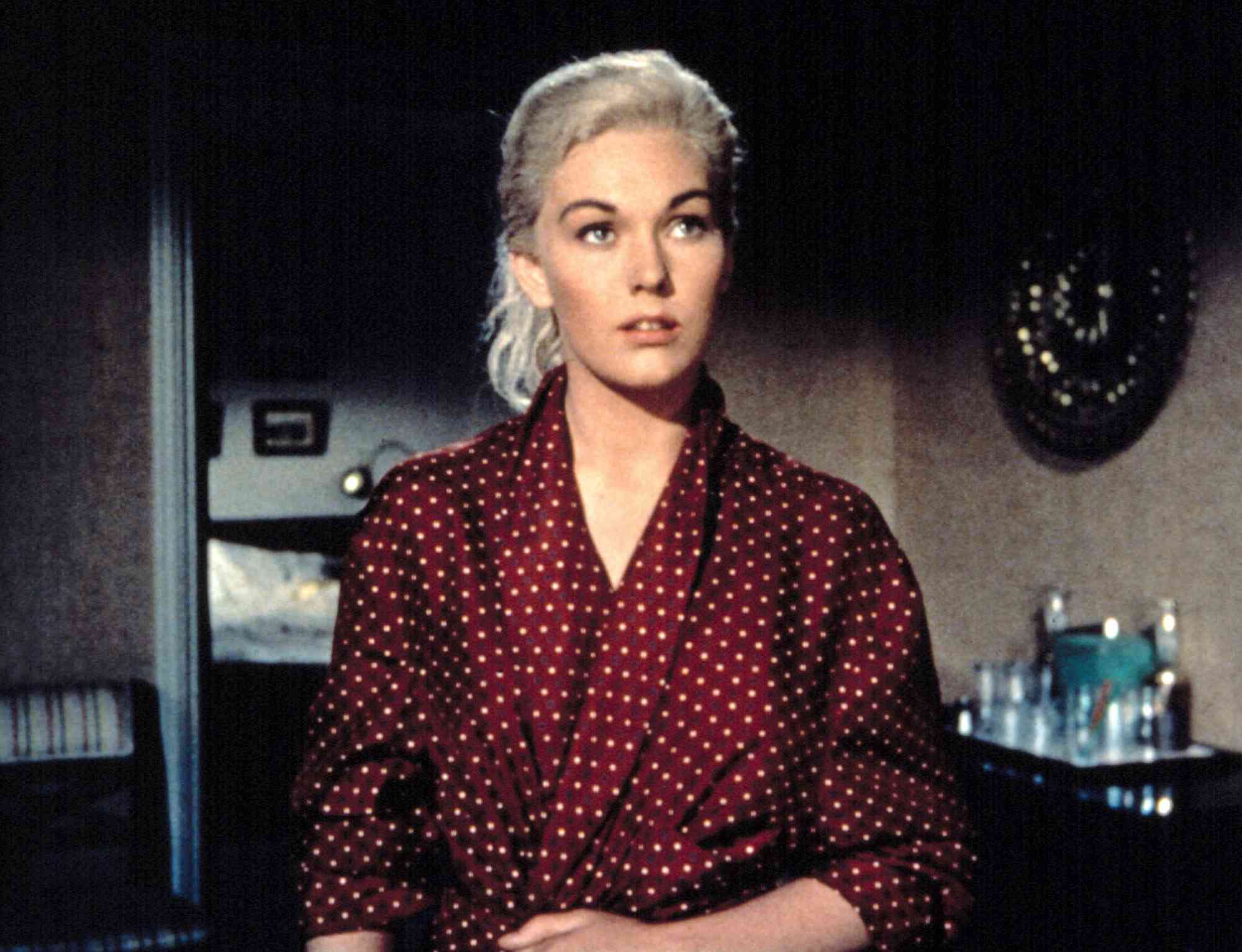
3. Vertigo (1956)
A mystery that’s actually a romantic tragedy, Vertigo is arguably Hitchcock’s masterpiece — for years it was ranked as the greatest movie of all time on Sight and Sound’s critics’ list. But it’s probably not the best way to make your first acquaintance with his work.
This is a swooningly odd film about sexual obsession, an erotic Mobius strip that connects death and infatuation in an endless, twisting loop. A retired San Francisco cop (Jimmy Stewart) is hired to tail an old friend’s wife, Madeleine (Kim Novak): She’s death-haunted, possibly mad, possibly suicidal. She’s also distinctively elegant, like Grace Kelly’s Lisa in Rear Window, with the difference that she likes to wander through the city in a morbid, poetic daze. She does, indeed, die, throwing herself from a tower — Scottie, who suffers from vertigo, is overcome with fear and can’t follow her up the stairs to save her. He’s shattered.
Related Stories


But then one day on the street he passes a woman who looks exactly like Madeleine, only coarser, cruder. Her name is Judy and — this is a point Hitchcock doesn’t try to conceal — she’s played by Novak, whose awkward, self-conscious performance is memorably perfect for the film’s odd scenario. Scottie persuades Judy — strong-arms her — to undergo a makeover: He wants his dead Madeleine back, and he gets her, in the worst possible way. We’ll leave the famous twist unstated so you can experience it for yourself. Vertigo wasn’t a success when it came out, perhaps because Hitchcock wasn’t aiming to entertain so much as seduce, and in this one he proved to be a very peculiar lover.
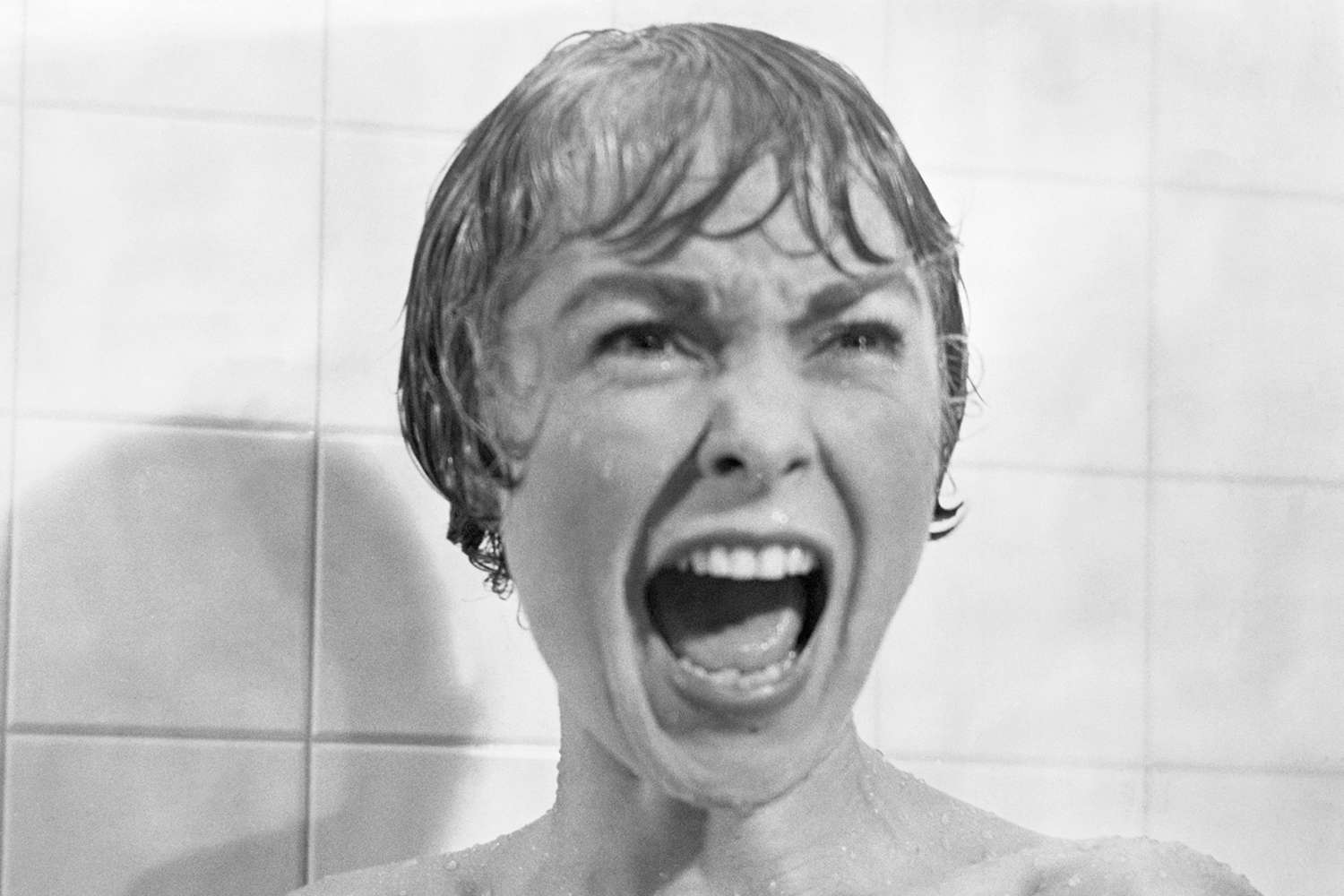
4. Psycho (1960)
This influential, calculatedly heartless slasher pic is probably the Hitchcock film most people know, whether or not they’ve seen it. (It’s probably showing nonstop at hell’s repertory cinema house.)
There are so many iconic, influential elements: the agitated chamber score by Bernard Herrmann (he used strings, he said, to match the film’s black-and-white cinematography); the lonely, empty Bates Motel, slowly expiring miles from the busy highway; Janet Leigh getting stabbed to death in the shower — a brutal, formally flawless scene; and Anthony Perkins’s twittering, twitching performance as Norman Bates, the psycho of the title. The violent moments stay with you, not just because of their shock value, but because Hitchcock executes them with the care of a Flemish artist painting the triptych for a cathedral altar. (There’s something unwholesome about that.)
And while you pity Leigh’s unlucky, on-the-lam Marion, who checks in at the motel for the night to wrestle with her conscience, you’re also drawn to Perkins’s pathetic, dysfunctional Norman. With his slim, neurasthenic prettiness, the actor could have been Hitchcock’s answer to Timothée Chalamet. The role both made and ruined his career, but he gives possibly the best performance in all of Hitchcock.
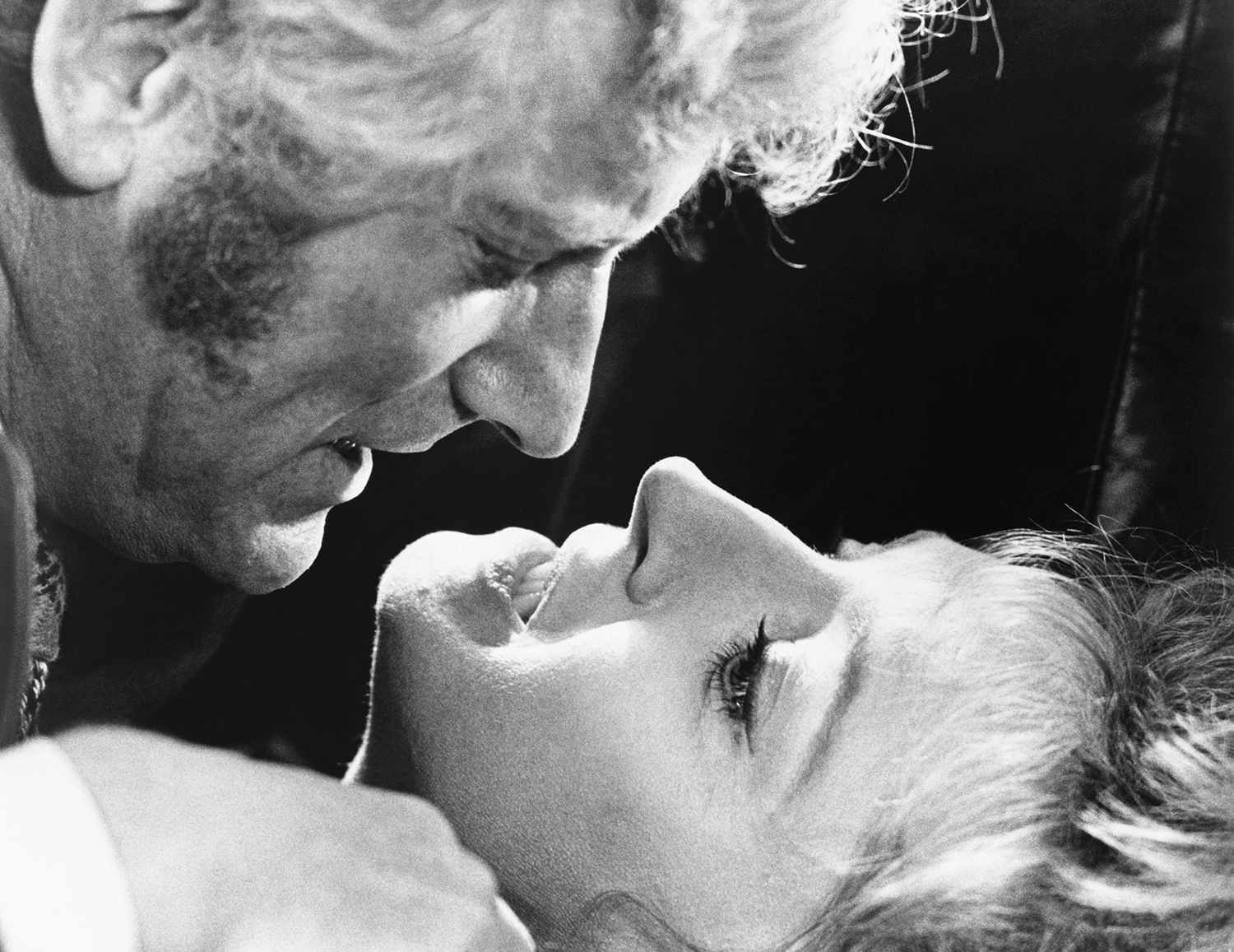
5. Frenzy (1972)
Hitchcock, whose tales of crime and suspense had always been made within the confines of public and studio taste, decided to embrace the new permissiveness of the 1960s and 1970s with this London-set thriller about a down-at-heels lug (Jon Finch) mistaken for a serial killer (Barry Foster).
The result has a sexual and physical rawness that’s startling and aggressive. One murder scene — a necktie strangling that includes rape — dwells on the victim’s exposed breast with a clinical pitilessness, then ends with a closeup of the corpse, her tongue protruding: The shot is so extreme you suspect Hitchcock is having a sick laugh.
In the most film’s famous segment, the killer, trying to recover a damning piece of evidence, breaks the clenched fingers of his latest female victim, naked and stashed in a sack of potatoes. The suspense is tremendous, but Hitchcock also seems to welcome your sense of repugnance as you hear the slender finger bones snapping. Frenzy was, deservedly, a critical and popular comeback for Hitchcock after a row of flops. But it makes for an uncomfortable, even hostile experience.
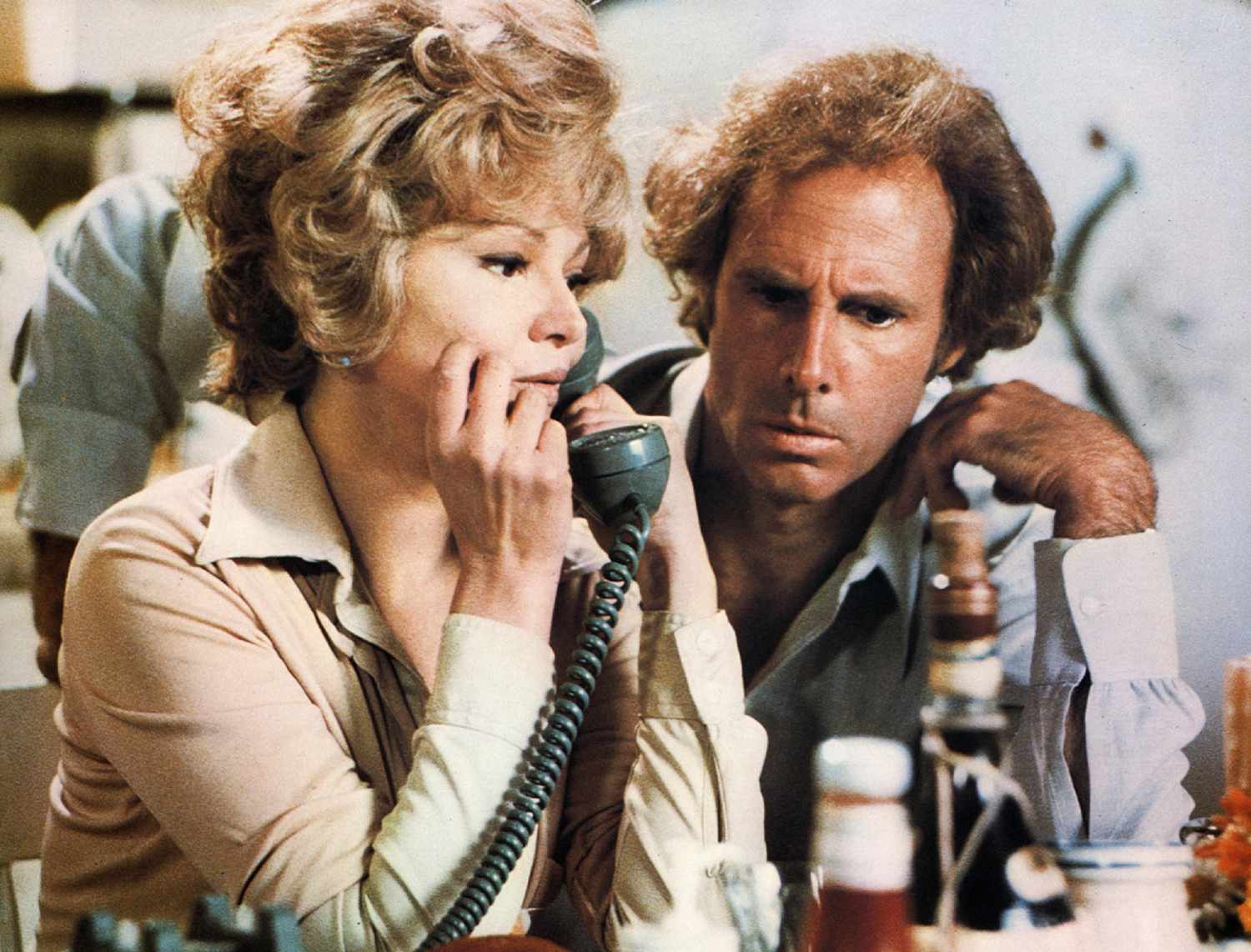
6. Family Plot (1976)
The director’s last film is a genial, cheerfully implausible comedy. A phony psychic and her cabbie boyfriend (Barbara Harris and Bruce Dern) wind up being hired to locate a man placed for adoption as a baby and now the possible heir to a comfy fortune. That baby, it turns out, has grown up to be a less than model citizen (William Devane) — he’s dangerous prey. The film is worth catching mostly as an opportunity to enjoy Freaky Friday star Harris, an idiosyncratically charming actress who left behind a regrettably brief Hollywood résumé. The even more eccentric Karen Black is here, too.

7. The Man Who Knew Too Much (1956)
I don’t have much to say about Hitchcock’s Vista-Vision remake of a black-and-white thriller he made in Britain back in the 1930s. Doris Day sings “Que Sera, Sera,” the song that became her signature, and you get a magnificent set piece — an attempted political assassination during a concert at London’s Royal Albert Hall.
But you might want to skip this and seek out Hitchcock classics on platforms other than Netflix: Rebecca (Hitchcock’s only movie to win Best Picture), Notorious, The Wrong Man, Shadow of a Doubt and North by Northwest, all on various streaming platforms.
Source: People
HiCelebNews online magazine publishes interesting content every day in the celebrity section of the entertainment category. Follow us to read the latest news.
Related Posts
- Katharine Hepburn and Barbara Walters.
ABC News Studios
Share on F…
- Jack Osbourne's 4 Daughters: All About Pearl, Andy, Minnie and Maple
- The Hollywood Reporter and GLAAD Celebrate Pride at Glittery Bash: “More Than Ever, It’s Important to be Loud, Proud and Vocal”
- 10 Iconic Beach Boys Needle Drops in Film and TV
- Loren Ruch, HGTV Content Chief, Dies at 55

